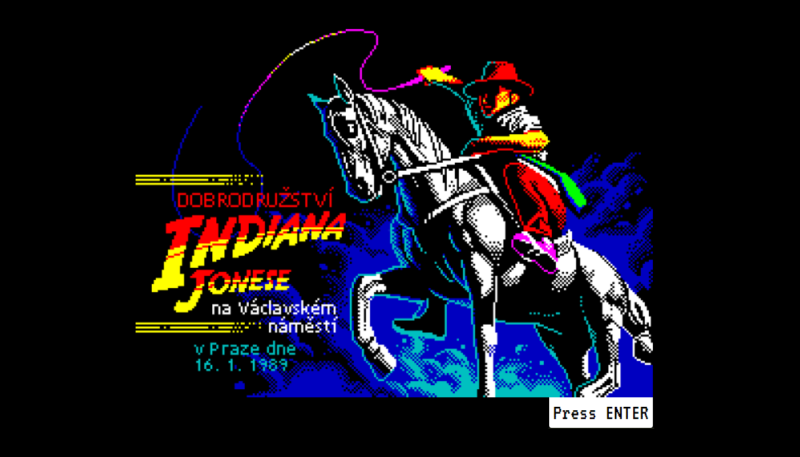How Indiana Jones fought the Communists (and led an era of activist video games)

Enlarge / The loading screen of the browser-friendly version of Indiana Jones in Wenceslas Square, converted by Jaroslav Švelch and 8-bit veteran Martin Kouba. (Let's officially consider this canon over Crystal Skull.)
Indiana Jones is caught behind the Iron Curtain. Specifically, the globe-trotting archeologist is in the former Czechoslovakia, a Soviet satellite state, and he’s fighting violent Communists, dodging water cannons, balancing on the edge of a crater, and running away from exploding bombs—the usual Indiana Jones stuff. But there’s no artifact this time. Instead, like many of the citizens toiling under the discredited regime, Dr. Jones simply wants to escape Czechoslovakia and return to the United States.
If you’re familiar with the Indiana Jones tetralogy trilogy, you know the situation above doesn’t come from the movie canon. Instead, this Jones adventure takes place in a clandestine video game that was released anonymously, then copied from one audio cassette to another. In 1989, students and dissidents had flocked to the center of Prague to protest Communism, only to be beaten and arrested by the riot police—an incident that took place during the lead up to the country's historic Velvet Revolution. These individuals could not fight back in real life, so they’d later use their computers to get a fictional revenge. A Western hero, Indiana Jones, came to their rescue to teach their oppressors a text-based lesson.
The Adventures of Indiana Jones in Wenceslas Square in Prague on January 16, 1989 puts the famous archeologist when and where the protests took place, video game historian Jaroslav Švelch, assistant professor at Charles University in Prague, Czechia, tells me. This title and others created by Czechoslovak teenagers in the late 1980s became part of the “chorus of activist media” that included student papers, rock songs, and samizdat—handwritten or typewritten versions of banned books and publications that circulated illegally.
Read 98 remaining paragraphs | Comments
from Gaming & Culture – Ars Technica https://ift.tt/3jjBfvf